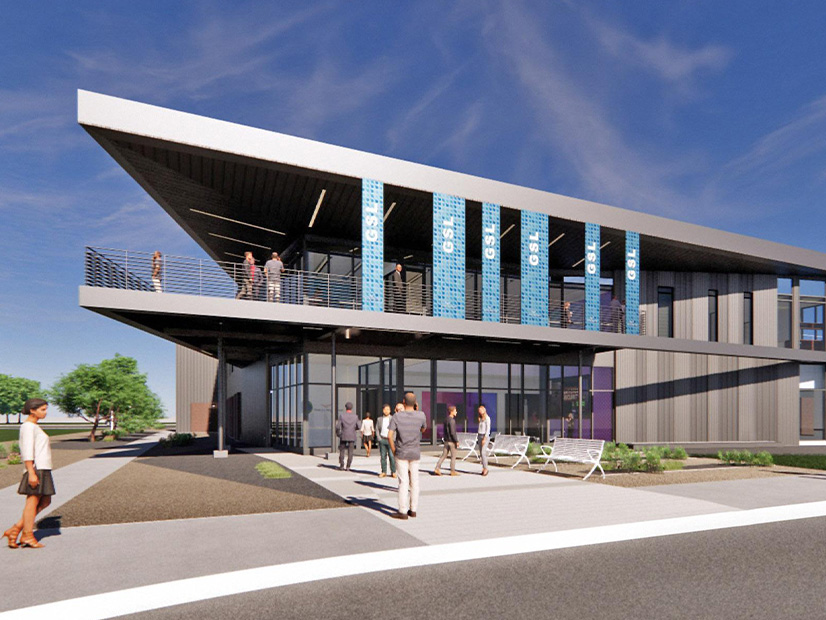
A new federal lab designed to speed up research into grid storage technologies should be up and running by the fall of 2023 — as long as supply chain problems don’t crop up.
In April, the Pacific Northwest National Laboratory (PNNL) began construction of its Grid Storage Launchpad in Richland, Wash. The project is being funded by $75 million in U.S. Department of Energy money and $35 million from non-federal sources, including the state of Washington and nonprofit science research organization Battelle.
“The Launchpad will help us make America’s grid more reliable and resilient, lead the world in inventing and exporting clean energy products, and accelerate the transition to a cleaner energy system,” Sen. Maria Cantwell (D-Wash.) said at the April groundbreaking. “PNNL has my continued support as it strives to make the Launchpad the world’s premier energy storage research center.”
The two-story building will contain 86,000 square feet of lab space with 35 lab stations to host roughly 100 researchers. Many of those researchers are currently scattered around PNNL’s campus.
As grids across the country integrate more renewable resources such as wind and solar, demands on the nation’s power grids go up and down, which makes storing electricity more difficult, Vince Sprenkle, PNNL’s senior technical adviser for energy storage, told RTO Insider.
Sprenkle said a weakness related to wind and solar is the limited amount of time that their surplus generation can be stored in batteries for future deployment, unlike the fuel for gas-fired plants, which can be kept in tanks, or the water for hydropower, which can be stored in reservoirs. The Grid Storage Launchpad will seek ways to improve batteries to hold energy longer, he said.
Overall, the PNNL lab will develop and test new grid storage technologies, ranging from researching basic materials, improving components and testing prototypes. The lab’s testing equipment will be able handle storage projects of up to 100 kW.
A significant problem in developing power storage technology is that it usually takes at least 10 years to develop a concept from an idea to a working real-world piece of equipment. “We can’t afford that kind of development timeline,” Sprenkle said.
The Launchpad is supposed to accelerate the timeline by looking at final uses as soon as an initial idea is proposed, as opposed traditional path of looking for final uses partly through the development process. Sprenkle speculated the laboratory could possibly trim development times to five years.
PNNL expects to receive high-level grid storage goals from the federal government, with the national laboratory designing a plan of attack for DOE feedback. “Our job is to de-risk it for the United States,” Sprenkle said.
The Launchpad will “probably be ready in the fall of 2023, barring any supply chain problems,” he said.

